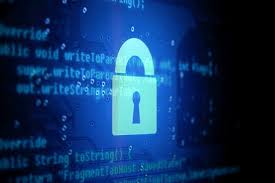The world we live in today is digital. Comprising part of this digital landscape is cybersecurity User Management and Access Control. They are two elements that go hand-in-hand.
Cybersecurity User Management is a tool that allows SysAdmins (System Administrators) to manage network users effectively. For example, when there is a new employee in an organization, the System Administrator will create a new user on the company network. System Administrators usually monitor user activity on a regular basis. If a staff member leaves their employ, the SysAdmin will disable the user account.
Network Admins use access control to allow and give or restrict a computer network’s section. It is in charge of and controls user permissions.
So what is the connection to cybersecurity?

Greater Risks Result From Greater Access
Trust is big in the IT and cybersecurity world. How can an organization truly succeed if it cannot trust its employees? No organization likes to think it cannot trust its people. It is the nature of those in the cybersphere to trust the systems created to withstand unauthorized access and the people who run and test those systems. More often than not, employees are a company’s first line of defense.
Blind trust, however, is risky. Whether on purpose or not, a network user could gain access to a restricted area of an organization’s network or give access to an outside party. A security breach could occur and compromise either the user account or the entire network itself. This possibility becomes more dangerous and serious as more networks and users are involved. Such is the case in hospitals, universities, city services, and the federal government.
Multiple Access Points
There is no single computer station for each user these days. With technological advances, users can now gain access to a computer network from multiple sources: on-site, mobile, and VPN, for example.
Threat detection programs must be in place to respond to these same access points. System Administrators need to continuously monitor and test Cyber Security User Management and Access Control systems to make sure they are as up-to-date as possible.
Passwords
This is a highly stressed subject and point: weak passwords result in a weak computer system. Healthy User Management tools need strong and difficult-to-guess passwords and need to ensure that users update them on a continuous basis. At the end of the day, a multiple risk could be involved, not just simply their own.
This is a highly stressed subject because weak passwords result in a weak computer system. Healthy User Management tools need strong and difficult-to-guess passwords and need to be updated continuously.
Social Media and Access Control
Hackers often attempt to get entry into a secure network through social media. Since a Facebook friend request or a Twitter follow from a stranger is common, network users and System Administrators must keep a careful watch.
This is why many organizations either don’t allow or greatly limit social media access from within their network.
Ongoing Monitoring
Managing users on a network can turn out to be a full-time position. Think about the activity in a large organization, such as a highly successful marketing and advertising company. The company could employ 700 staff members in 10 different offices, located in five different countries, with top-level executives and a dedicated sales team who travel internationally. Physical separation and constant movement like this would need a serious setup that cannot rely on random spot checks.
It is absolutely critical that Network Admins have strong tools to make sure that strict User Management and Access Control measures are in place.
To learn more about the University of Miami Cybersecurity Programs, CLICK HERE to get in touch with our education advisors.


